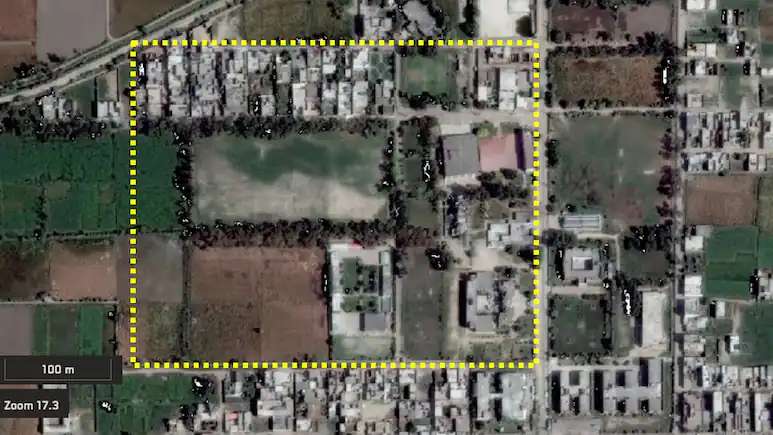Satellite Images Provide ‘Before-After’ Contrast Of Pak Terror Camps, Airfields
The Indian military launched the missile attacks on nine terrorist camps - four in Pakistan and five in Pakistan-Occupied Kashmir (PoK).

New Delhi:
The Indian Military have put out satellite photos that uncover visual proof of the devastation wrought by Operation Sindoor at terror facilities all over Pakistan and Pakistan-Occupied Kashmir (PoK). The visuals provide before-and-after snapshots of two high-profile targets: Muridke and Bhawalpur, and India’s retaliatory attacks against Pakistan’s air defence radars and airfields.
India’s measured military response to the April 22 Pahalgam terrorist attack aimed at terror infrastructure in Pakistan and PoJK – where operational bases of Lashkar-e-Taiba (LeT), Jaish-e-Mohammed (JeM), and Hizbul Mujahideen existed. During a surprise attack in the early hours of last week, the Indian Armed Forces conducted the missile attacks on nine terror camps – four in Pakistan (Bhawalpur, Muridke, Sarjal, and Mehmoona Joya), and five in PoK (Sawai Nala, Muzaffarabad, Syedna Bilal, Muzaffarabad, Gulpur, Kotli, Barnala, Bhimber, and Abbas, Kotli), they added.
Murdike, a large commercial center, is where the Lashkar-e-Taiba has its headquarters. It is the “terror nursery” of Pakistan. LeT’s headquarters is said to span around 200 acres and includes a terror training camp and other facilities.
The terror group headed by Hafiz Saeed is suspected to be responsible for the April 22 attack in Baisaran, a distance from Jammu and Kashmir’s Pahalgam, in which 26 individuals were killed.
Operation Sindoor on Pakistani airfields
Following India‘s precision cruise missile attacks on terror infrastructure to retaliate for the Pahalgam attack, Pakistan further escalated by targeting Indian civilian zones using drones. India targeted specific military installations deep within Pakistani territory like radar sites, command and control facilities, and ammunition dumps in Rafiqui, Chaklala, Rahim Yar Khan, Sukkur, and Sialkot among others.
According to the Indian military, the country’s actions on the nights of May and 10 were the first instance of a country damaging air force camps of a nuclear country.
“Within three hours, 11 bases were attacked, including Nur Khan, Rafiqui, Murid, Sukkur, Sialkot, Pasrur, Chunian, Sargodha, Skaru, Bholari, and Jacobabad,” Air Marshal AK Bharti said at a press conference on Monday.
“It was the right decision to send some additional message to the enemy. hit where it would hurt. India’s response however was targeted, and measured. We can target all systems in the air bases, but we showed restraint not to escalate,” he further said.
India-Pakistan tensions
India last week launched 24 missile attacks in 25 minutes across nine targets in Pakistan and Pakistan-Occupied Kashmir, eliminating 100 terrorists. The government said it attacked the “snake’s head and not foot soldiers” this time, showing it is adopting its new strategy to eliminate terrorists based in Pakistan.
Tensions between the two nations increased after India’s Operation Sindoor. Ever since, India has fended off several waves of drone and missile attacks by Pakistan on Indian military bases in Jammu and Kashmir, Rajasthan, and Punjab. On Saturday, there were reports of several explosions at several Pakistani air bases and also heard in Srinagar. By evening, Pakistan issued a call for a ceasefire but ended up breaching it within hours.
Advertisement
Sunday evening was the “first calm” evening on the Line of Control (LoC) in days, the Indian Army reported.
“The evening was quiet overall along Jammu and Kashmir and other sectors of the International Border.“.






